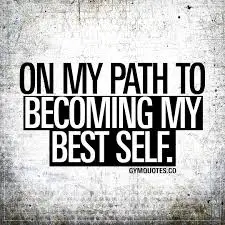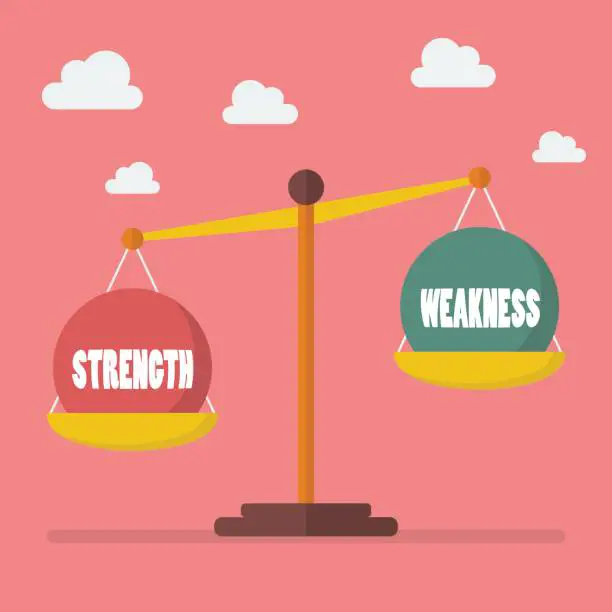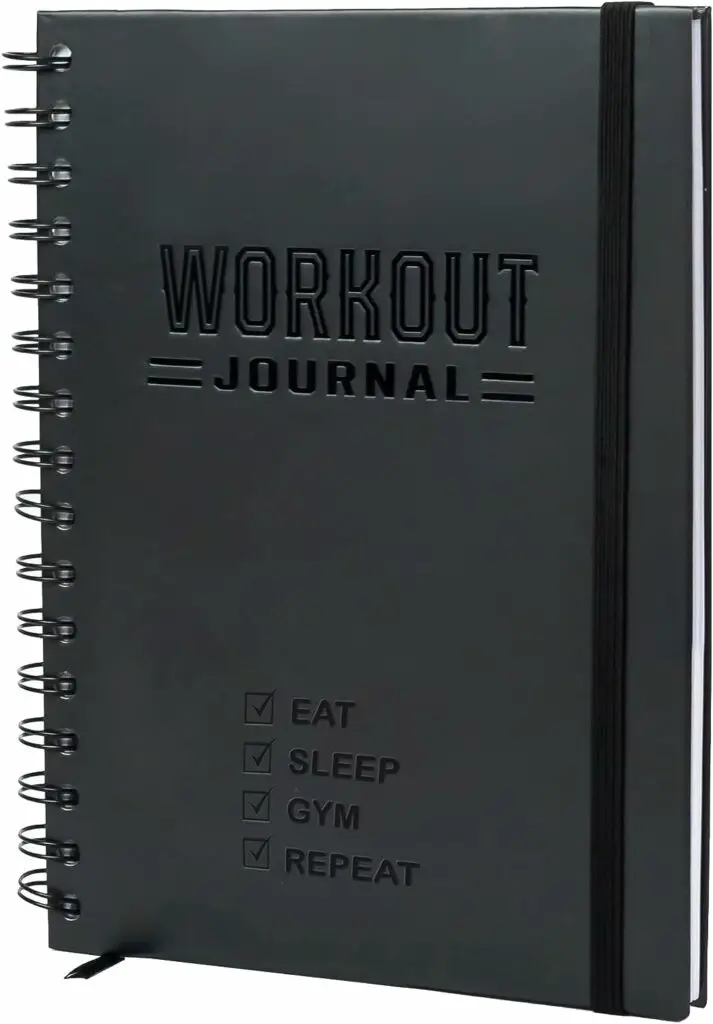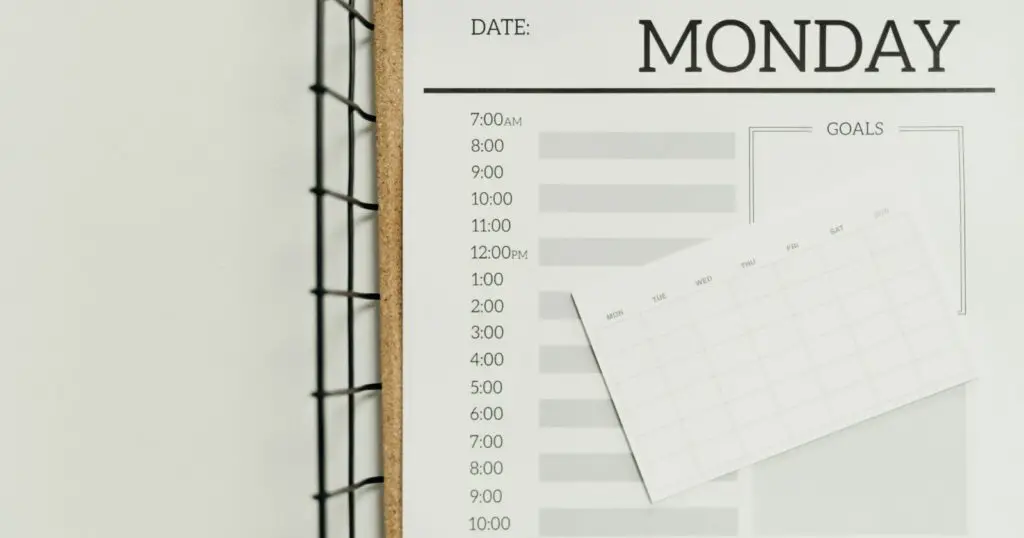If you’re someone who is serious about achieving fitness goals, then you should consider documenting your fitness journey. Documenting your progress can help keep you motivated and accountable. You’ll be able to track your progress and see how far you’ve come, which can be a powerful motivator to keep going.
There are many reasons why you might want to document your fitness journey. For one, it can help you keep yourself accountable to your goals. By having a tangible record of your progress, you’ll be reminded of your commitments and be more likely to stick to them. Additionally, documenting your journey can help you identify patterns and trends in your progress, which can help you make adjustments to your fitness plan to achieve your goals more efficiently.

Whether you prefer to use a fitness journal, an app, or a spreadsheet, there are many methods of documenting your fitness journey. By utilizing resources and tools that work for you, you can make the process easier and more enjoyable. Additionally, it’s important to consider the role of mindset and intrinsic motivation in achieving your goals. By evaluating and adjusting your fitness plan as needed, you can stay on track and achieve the results you’re looking for.
Key Takeaways
- Documenting your fitness journey can help keep you motivated and accountable to your goals.
- There are many methods of documenting your journey, so find what works best for you.
- By evaluating and adjusting your fitness plan as needed, you can stay on track and achieve the results you’re looking for.
The Importance of Documenting Your Fitness Journey
If you’re serious about your fitness goals, it’s essential to document your fitness journey. This practice has many benefits that can help you stay on track and achieve your goals. Here are some of the reasons why documenting your fitness journey is important.
Accountability and Motivation
One of the main reasons to document your fitness journey is accountability. When you write down your goals and track your progress, you’re more likely to stay committed to your fitness routine. You can also share your journey with others, which can provide motivation and support when you need it.
Tracking Progress and Success
Documenting your fitness journey allows you to track your progress and success over time. You can record important metrics like weight, body fat percentage, and measurements to see how your body is changing. This data can help you identify what’s working and what’s not, so you can adjust your fitness routine accordingly.
Identifying Strengths and Weaknesses
Documenting your fitness journey can also help you identify your strengths and weaknesses. By tracking your workouts and recording how you feel, you can see which exercises are most effective for you and which ones you struggle with. This knowledge can help you tailor your workouts to your specific needs and goals.

Overall, documenting your fitness journey is an important step towards achieving your fitness goals. It can help you stay accountable, motivated, and track your progress over time. So, grab a notebook or download a fitness tracking app and start documenting your journey today!
Methods of Documenting Your Fitness Journey
Tracking your fitness journey is important to help you stay motivated and see progress over time. There are several ways to document your fitness journey, each with its own benefits and drawbacks. Here are some of the most popular methods:
Fitness Journal
One of the most effective ways to document your fitness journey is by keeping a fitness journal. This can be a physical notebook or an app on your phone. A fitness journal allows you to track your workouts, including the exercises you did, the weights you lifted, and the number of reps and sets you completed. You can also record how you felt during the workout and any notes on your progress. This information can help you adjust your workout routine and see patterns over time.
Check out this great workout journal and others on Amazon.

Taking Photos
Taking progress photos is another popular way to document your fitness journey. This can be a great way to see changes in your body composition over time. Take photos from different angles, and make sure to take them under the same lighting and conditions each time. You can also use photo editing tools to compare your progress side-by-side.

Using Social Media
Social media can be a great way to document your fitness journey and connect with others who are on a similar journey. You can post photos, videos, and updates on your progress, and use hashtags to connect with others who are using the same tags. Social media can also provide a sense of accountability, as you’ll be sharing your progress with others.
Blogging Your Journey
If you enjoy writing, consider starting a blog to document your fitness journey. This can be a great way to share your experiences and insights with others. You can write about your workouts, nutrition, and any challenges you’re facing. Blogging can also provide a sense of accountability and motivation, as you’ll be sharing your progress with others.

Overall, there are many ways to document your fitness journey. Choose the method that works best for you, and be consistent in tracking your progress. Remember, the key to success is consistency and dedication.
Utilizing Resources and Tools
If you’re serious about documenting your fitness journey, you need to have the right resources and tools to help you along the way. Here are a few key areas where you can utilize these resources to help you achieve your goals.
Working with a Personal Trainer
One of the best ways to ensure that you’re making progress and staying on track is to work with a personal trainer. A personal trainer can help you create a workout plan that is tailored to your goals and fitness level. They can also provide you with guidance and support as you work towards achieving your goals.
When working with a personal trainer, make sure that you communicate your goals clearly and honestly. This will help them create a plan that is tailored to your specific needs. Additionally, make sure that you’re comfortable with your trainer and that you feel like they’re listening to your needs and concerns.
Gym Membership
Having a gym membership is another important resource for documenting your fitness journey. A gym provides you with access to a wide range of equipment and facilities that can help you achieve your goals. Additionally, a gym provides you with a community of like-minded individuals who can offer you support and motivation.
When choosing a gym, make sure that it’s conveniently located and has the equipment and facilities that you need. Additionally, make sure that you feel comfortable in the gym and that you’re able to work out at a pace that is comfortable for you.
Planning and Scheduling Your Workouts
Planning and scheduling your workouts is another key component of documenting your fitness journey. By planning your workouts in advance, you can ensure that you’re making progress towards your goals and that you’re staying on track.

When planning your workouts, make sure that you’re setting realistic goals and that you’re scheduling your workouts at a time that is convenient for you. Additionally, make sure that you’re scheduling rest days to allow your body to recover and prevent injury.
Overall, utilizing these resources and tools can help you achieve your fitness goals and document your journey along the way. By working with a personal trainer, joining a gym, and planning and scheduling your workouts, you can ensure that you’re making progress towards your goals and staying on track.
The Role of Mindset and Intrinsic Motivation
When it comes to documenting your fitness journey, your mindset and intrinsic motivation play a crucial role. Your mindset refers to your attitude and beliefs towards fitness, while intrinsic motivation means being motivated by internal factors, such as personal satisfaction, enjoyment, and a sense of accomplishment.
Having a positive mindset can help you stay consistent and focused on your fitness goals. When you believe that you can achieve your goals, you are more likely to put in the effort and time needed to reach them. On the other hand, a negative mindset can lead to self-doubt, procrastination, and even giving up.
Intrinsic motivation is also essential for a successful fitness journey. When you are motivated by internal factors, you are more likely to stick to your fitness routine, even when faced with obstacles and challenges. This type of motivation is sustainable and long-lasting, as it comes from within you, rather than external rewards or pressure.
To cultivate a positive mindset and intrinsic motivation, it is essential to set realistic goals, celebrate your progress, and focus on the process rather than just the outcome. It is also helpful to find activities that you enjoy and that align with your values and interests.
In summary, a positive mindset and intrinsic motivation are crucial for a successful fitness journey. By cultivating these qualities, you can stay consistent and focused on your goals, and enjoy the process of becoming a healthier, fitter version of yourself.
How to Evaluate and Adjust Your Fitness Plan
When it comes to your fitness journey, evaluating and adjusting your fitness plan is essential for continued progress. Here are some sub-sections to help you recognize and celebrate milestones, deal with plateaus, and adjust your workout and nutrition plan.
Recognizing and Celebrating Milestones
One of the most important things you can do to stay motivated on your fitness journey is to recognize and celebrate your milestones. Whether it’s losing a few pounds, running your first 5K, or completing a challenging workout, taking the time to acknowledge your achievements can help you stay focused and motivated.
To keep track of your progress, consider keeping a fitness journal or using a fitness app. This can help you see how far you’ve come and remind you of your accomplishments when you’re feeling discouraged.
Dealing with Plateaus
Plateaus are a common occurrence in any fitness journey, but they can be frustrating. If you’ve hit a plateau, don’t get discouraged. Instead, try mixing up your workout routine, increasing the intensity of your workouts, or trying a new type of exercise.
Another way to break through a plateau is to focus on your nutrition. Make sure you’re fueling your body with the right foods and the right amount of calories. Consider consulting with a registered dietitian to help you develop a nutrition plan that supports your fitness goals.
Adjusting Your Workout and Nutrition Plan
As you progress on your fitness journey, your workout and nutrition plan may need to be adjusted. For example, if you’ve been doing the same workout routine for a while, it may be time to switch things up to challenge your body in new ways.

Similarly, if you’ve hit a weight loss plateau, you may need to adjust your calorie intake or macronutrient ratios to continue making progress. Consulting with a personal trainer or registered dietitian can help you develop a customized workout and nutrition plan that supports your goals.
Remember, evaluating and adjusting your fitness plan is a normal part of the process. By staying focused, celebrating your milestones, and making adjustments as needed, you can continue making progress towards your fitness goals.
Conclusion
In conclusion, documenting your fitness journey is an essential part of achieving your fitness goals. By tracking your progress, you can see how far you have come and appreciate the hard work you have put in. It also helps you identify areas where you need to improve and make adjustments to your fitness routine.
Documenting your fitness journey can also be a great motivator. When you see the progress you have made, it can give you the push you need to keep going. Additionally, setting small goals and rewarding yourself when you achieve them can help you stay on track and be more consistent with your fitness routine.
Remember, your fitness journey is unique to you, so it’s important to document it in a way that works best for you. You can use a fitness app, a journal, or even a spreadsheet to track your progress. The important thing is to keep track of your progress and celebrate your successes along the way.
Finally, documenting your fitness journey is not just about achieving your fitness goals. It’s also about improving your overall wellness. By taking the time to focus on your fitness, you are investing in your physical and mental health, which can have a positive impact on all areas of your life. So, keep documenting your fitness journey and enjoy the benefits that come with it!
Frequently Asked Questions
Are there any downsides to not documenting your fitness journey?
Yes, there are downsides to not documenting your fitness journey. When you don’t document your fitness journey, you may not be aware of your progress. This can lead to a lack of motivation and a feeling of being stuck in your fitness routine. You may also forget what worked for you in the past and what didn’t, making it difficult to make adjustments to your routine.
What are some effective ways to document your fitness journey?
There are several effective ways to document your fitness journey. You can use a fitness journal to track your progress, including your workouts, meals, and measurements. You can also take photos of yourself to see how your body changes over time. Another effective way to document your fitness journey is to use fitness apps that track your workouts and progress automatically.
How can documenting your fitness journey help you stay motivated?
Documenting your fitness journey can help you stay motivated in several ways. First, seeing your progress can be incredibly motivating. When you see how far you’ve come, you’ll be more likely to keep going. Second, documenting your fitness journey can help you identify what works for you and what doesn’t. This can help you make adjustments to your routine to stay on track. Finally, sharing your progress with others can be motivating and inspiring. When you see others achieving their fitness goals, you’ll be more likely to keep pushing yourself.

